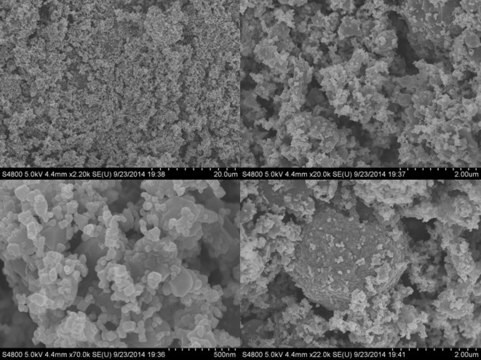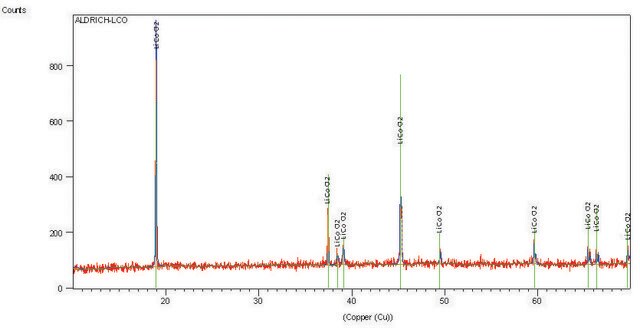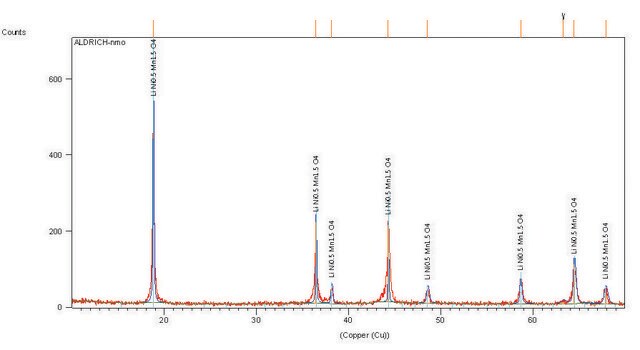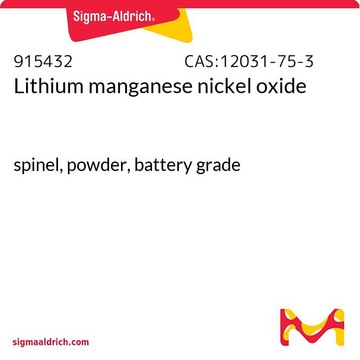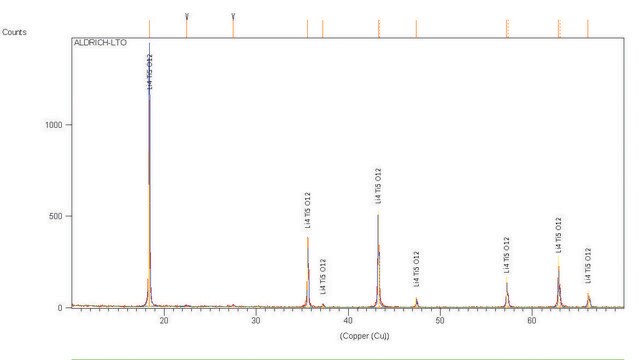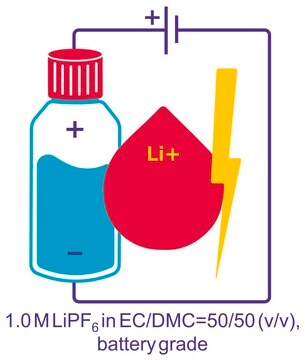761001
Lithium nickel manganese cobalt oxide
powder, <0.5 μm particle size, >98%
Synonym(s):
NMC
About This Item
Recommended Products
grade
battery grade
Quality Level
Assay
>98%
form
powder
mol wt
Mw 96.46 g/mol
composition
LiNi0.33Mn0.33Co0.33O2
greener alternative product characteristics
Design for Energy Efficiency
Learn more about the Principles of Green Chemistry.
sustainability
Greener Alternative Product
particle size
<0.5 μm
mp
>290 °C (lit.)
density
2.11 g/cm3
application(s)
battery manufacturing
greener alternative category
, Enabling
General description
Application
Features and Benefits
- More Reliable
- Longer Cycle Life
- Bulk and Pilot Scale Available
Legal Information
related product
Signal Word
Warning
Hazard Statements
Precautionary Statements
Hazard Classifications
Carc. 2 - Skin Sens. 1
Storage Class Code
13 - Non Combustible Solids
WGK
WGK 3
Flash Point(F)
Not applicable
Flash Point(C)
Not applicable
Choose from one of the most recent versions:
Already Own This Product?
Find documentation for the products that you have recently purchased in the Document Library.
Customers Also Viewed
Articles
Professor Qiao’s laboratory lays out recent advances in conversion type lithium metal fluoride batteries. This review explores key concepts in developing electrochemically stable microstructures for wide Li-ion insertion channels.
Discover more about advancements being made to improve energy density of lithium ion battery materials.
Li-ion batteries are currently the focus of numerous research efforts with applications designed to reduce carbon-based emissions and improve energy storage capabilities.
Lithium-ion batteries (LIBs) have been widely adopted as the most promising portable energy source in electronic devices because of their high working voltage, high energy density, and good cyclic performance.
Our team of scientists has experience in all areas of research including Life Science, Material Science, Chemical Synthesis, Chromatography, Analytical and many others.
Contact Technical Service